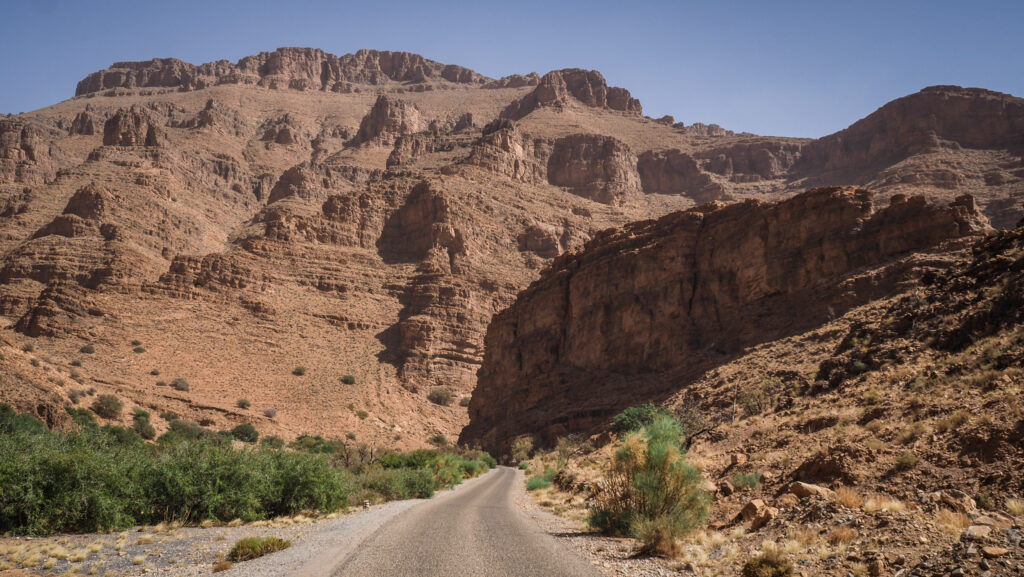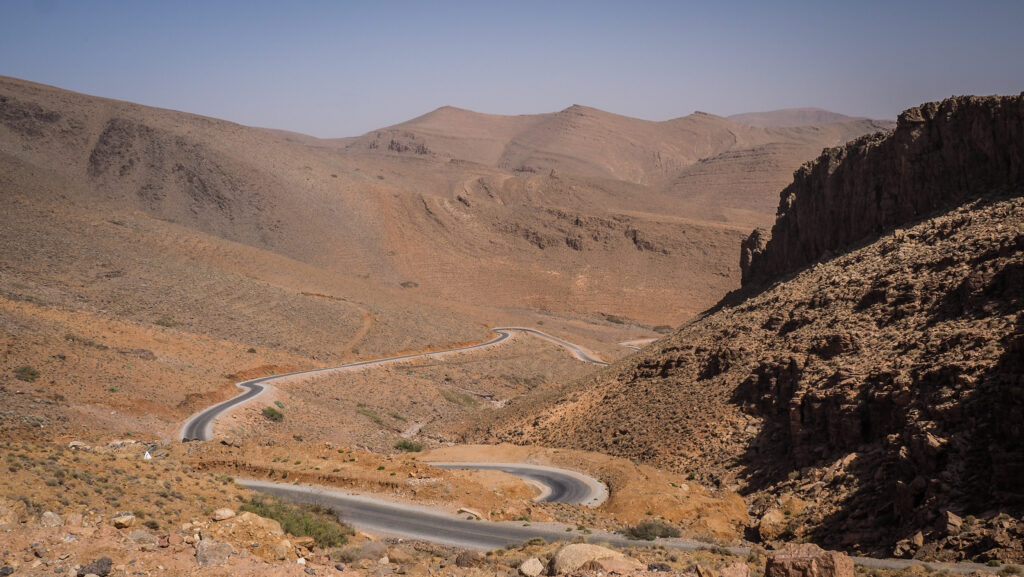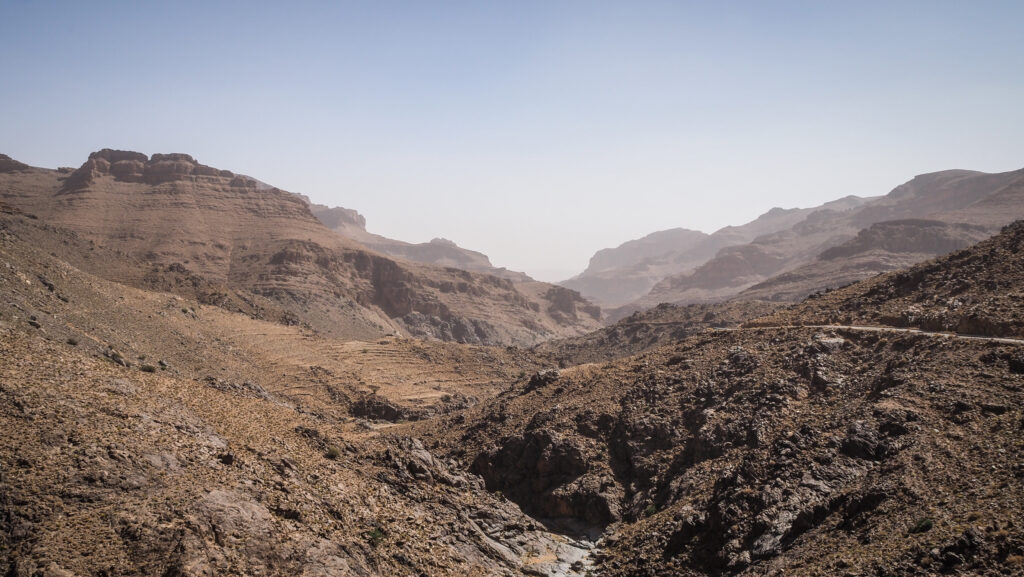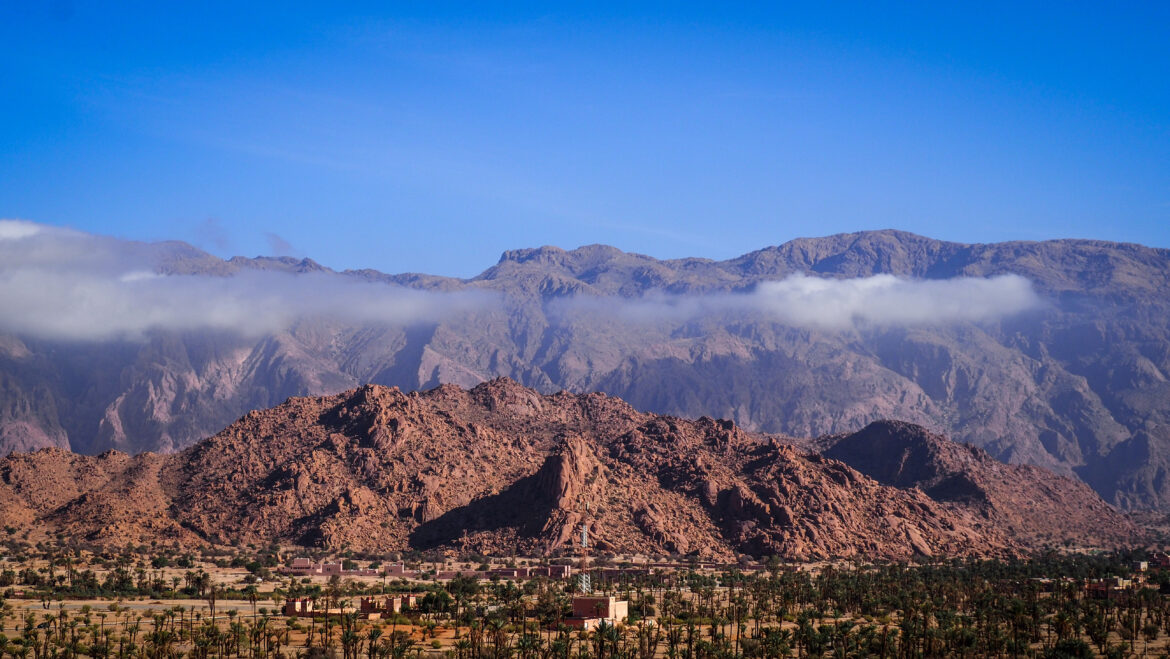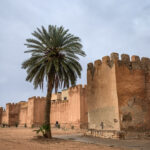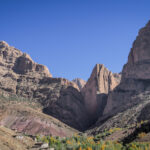Tafraoute is a small town in southern Morocco, located in the Anti-Atlas mountains in the Souss-Massa region. Its history is deeply connected to its geography and Berber heritage.
Prehistoric rock carvings and petroglyphs found in the area suggest that early human settlers lived here as far back as the Neolithic period. These carvings depict animals such as gazelles, cattle, and giraffes, showing that the region was once more verdant.
The town is at the heart of a region primarily populated by the Berbers, also known as the Amazigh people, the indigenous inhabitants of North Africa. The Berbers of Tafraoute have a long history of resilience and cultural preservation. Throughout history, they resisted outside rule, including from Phoenician, Roman, and later Arab conquests, maintaining their distinct language, culture, and traditions. Tafraoute is in the territory of the Shilha-speaking Berbers, one of the many Berber language groups in Morocco. Over centuries, the people of this area were known for their semi-nomadic lifestyles, agriculture, and trade across the Sahara.
With the arrival of Islam in the 7th and 8th centuries, Tafraoute, like other parts of Morocco, gradually embraced the new religion. However, the mountainous and isolated nature of the region allowed the local Berber population to maintain a degree of autonomy. During the rule of the Almoravid and Almohad dynasties (11th to 13th centuries), Tafraoute remained part of the broader Moroccan realm, but due to its remote location, it was largely on the periphery of political and military conflicts.
Morocco became a French protectorate in 1912, though the Anti-Atlas region remained difficult for French authorities to control. Tafraoute, with its rugged terrain, was a natural refuge for those resisting colonial rule. The town and its surrounding villages played a role in the Berber resistance movements, especially in the 1920s and 1930s. Berber tribes in this region were fiercely independent, and many revolted against French rule. The colonization of Morocco also brought some infrastructural development to the region, including roads and schools, but the Anti-Atlas remained relatively isolated compared to other parts of the country.
After Morocco gained independence in 1956, Tafraoute became part of the newly unified state. However, it continued to be a relatively isolated and underdeveloped part of the country. In the mid-20th century, many inhabitants of Tafraoute emigrated to urban centres such as Casablanca or abroad, especially to France, for economic opportunities. This has led to a strong Tafraoute diaspora, particularly in Europe. In recent decades, Tafraoute has gained recognition as a tourist destination, known for its stunning landscapes of pink granite mountains, the Ameln Valley, and its traditional Berber culture. Its annual almond blossom festival, held in February or March, celebrates the region’s natural beauty and agricultural heritage.
How to get there?
From Agadir:
By Bus:
Buses, operated by companies like CTM and Supratours, run regularly between Agadir and Tafraoute. This is an affordable and comfortable option, but make sure to check the schedule in advance.
By Grand Taxi:
Shared taxis are available and a faster, but less comfortable, option than the bus. You may have to wait until the taxi fills up with other passengers before departing.
By Rental Car:
Renting a car gives you the most flexibility to explore the beautiful scenery along the way, such as the Anti-Atlas mountains. The drive is scenic but involves winding mountain roads. It’s about 165 km and the drive takes 3 hours.
If you decide to start from Agadir, I recommend using the service of Click’n’Go Car Rental. Amiable guys and easy to contact on WhatsApp. I rented a Renault Clio for the whole month and got a nice price.
From Marrakech:
By Bus:
There are no direct buses from Marrakech to Tafraoute. You’ll need to first take a bus to Agadir (about 3 hours) and then continue from Agadir to Tafraoute by bus or taxi.
By Rental Car:
Driving is the most flexible option. The route takes you through the Anti-Atlas mountains, offering stunning landscapes. The distance is about 380 km and the drive takes about 6 hours.
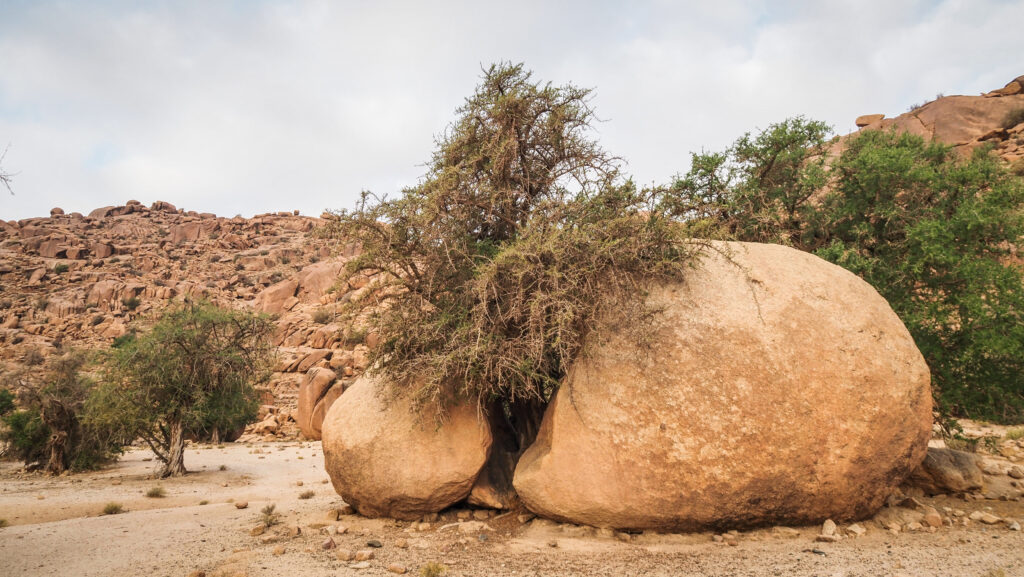
The best time to visit
The best time to visit Tafraoute is between February and April. This period offers mild and pleasant weather with comfortable daytime temperatures, typically ranging from 18°C to 25°C. This is ideal for outdoor activities such as hiking in the Anti-Atlas mountains, exploring the Ait Mansour Gorge, or wandering through the surrounding valleys. Another highlight of visiting Tafraoute during this time is the Almond Blossom Festival when the almond trees in the Ameln Valley are in full bloom. This creates a stunning spectacle of pink and white blossoms, and the festival itself features traditional Berber music, dance, and local crafts.
Tafraoute, like many parts of southern Morocco, can get extremely hot during the summer months, with temperatures often exceeding 40°C in July and August. The heat can make outdoor activities uncomfortable and limit exploration, so it’s best to avoid visiting during this time.
If spring isn’t an option, September to November is another good time to visit. The weather cools down after the summer heat, and temperatures become more pleasant for hiking and sightseeing.
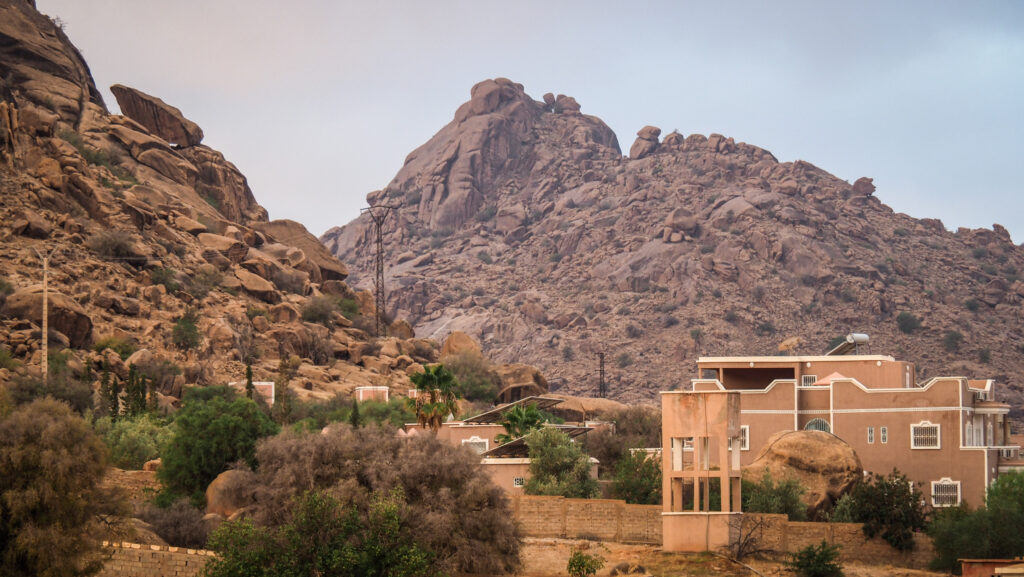
Where to stay?
I stayed in Azur Tafraout. It is located a bit further from the town centre in a very quiet area near the hills but still within walking distance of restaurants. The room was clean and cosy and breakfast provided in the morning was tasty.
How long to stay there?
You can do both, Tafraoute and the drive through Ait Mansour Gorges in one very long day. If you want to include some longer hikes in the area, then a minimum of two days will be needed.
How to get around?
The best is the have a car but if you like walking, then you will be able to see the places around Tafraoute anyway as they aren’t very far from each other. You could even hike to Painted Rocks, although be careful of the weather and you will be crossing desert-like landscapes which can be extremely hot during the day. Get offline Google Maps for that area or even better Mapy.CZ to make sure you won’t get lost.
What to see in Taroudant?
La Maison Berbère Traditionnelle de Tazka
An exciting place where you can learn a lot about the traditional life of the Berbers and see a traditional house with its furnishings. The owner is very nice, and he willingly talks about the current situation in the local community. He also presented old clay pots, tools and the set-up of the house and shared details about how the children studied, where they slept, how they had hammams in the house, how they managed to keep the room steamy, and how the livestock they kept on the ground floor kept the living room and the kitchen warm.
There is a phone number on the door, so if you don’t see anyone around, just give him a call and wait a bit.
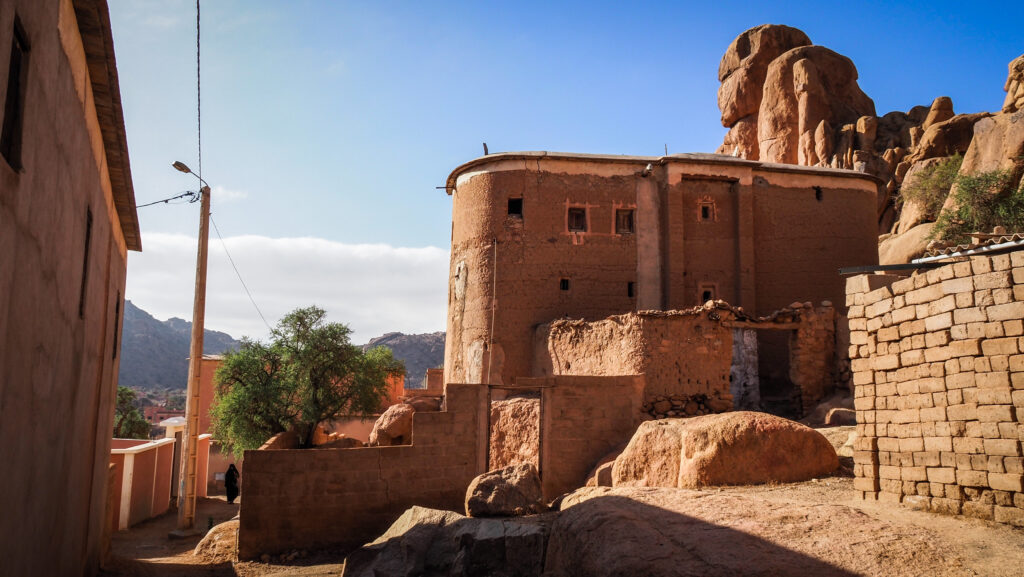
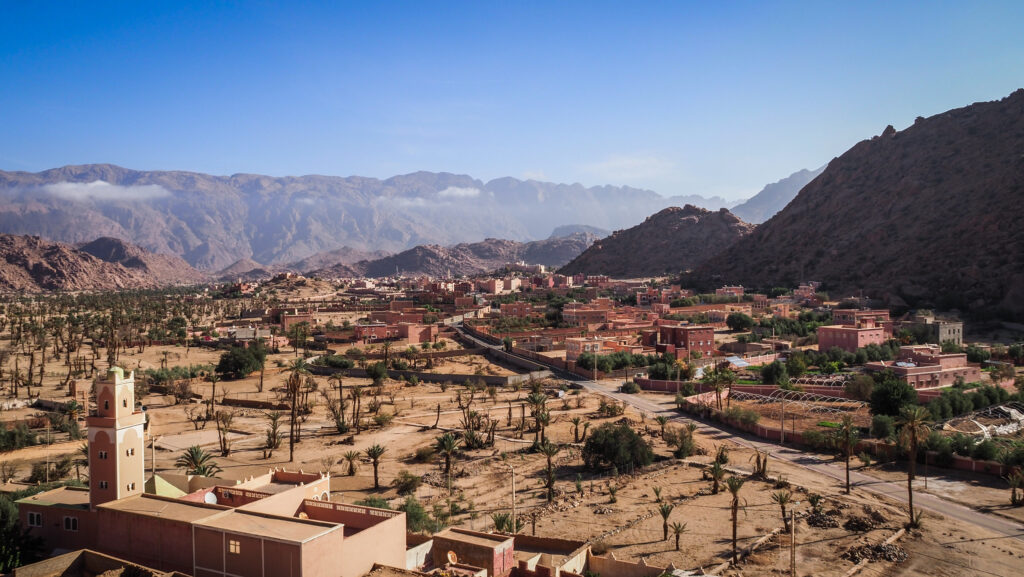
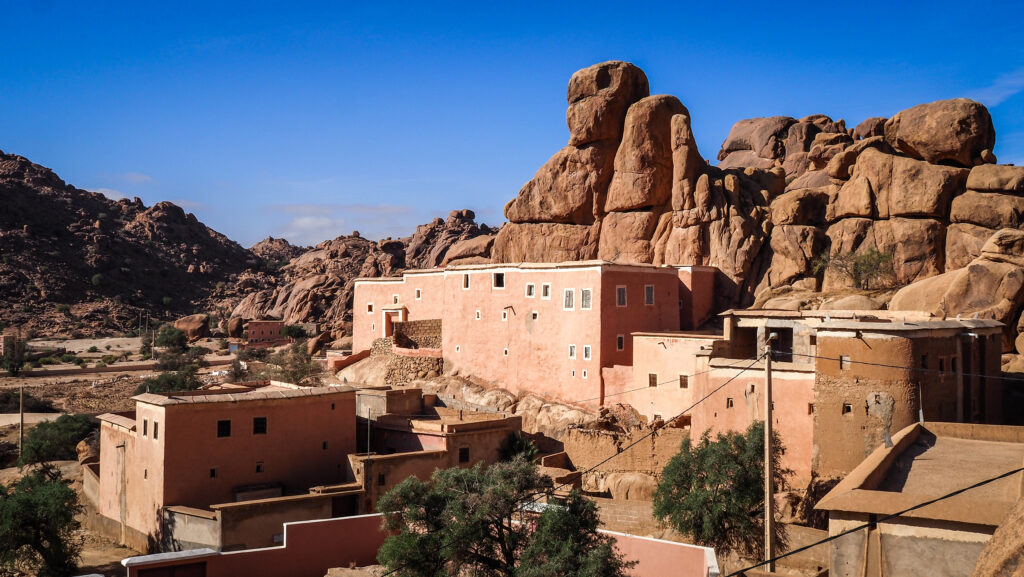
Tafraout Valley
It is a magnificent place with very beautiful rock formations and palm grove walks. Not far from La Maison Berbère Traditionnelle de Tazka, you will find a carved gazelle which is said to be an example of prehistoric rock engravings. I wouldn’t be so sure if it was prehistoric, but anyway, it’s great fun looking for it.
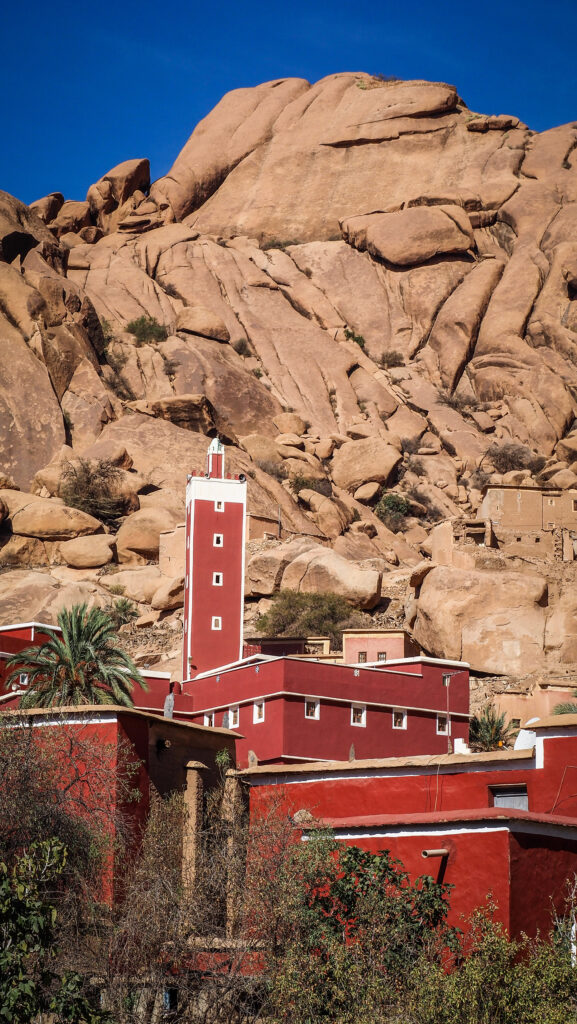
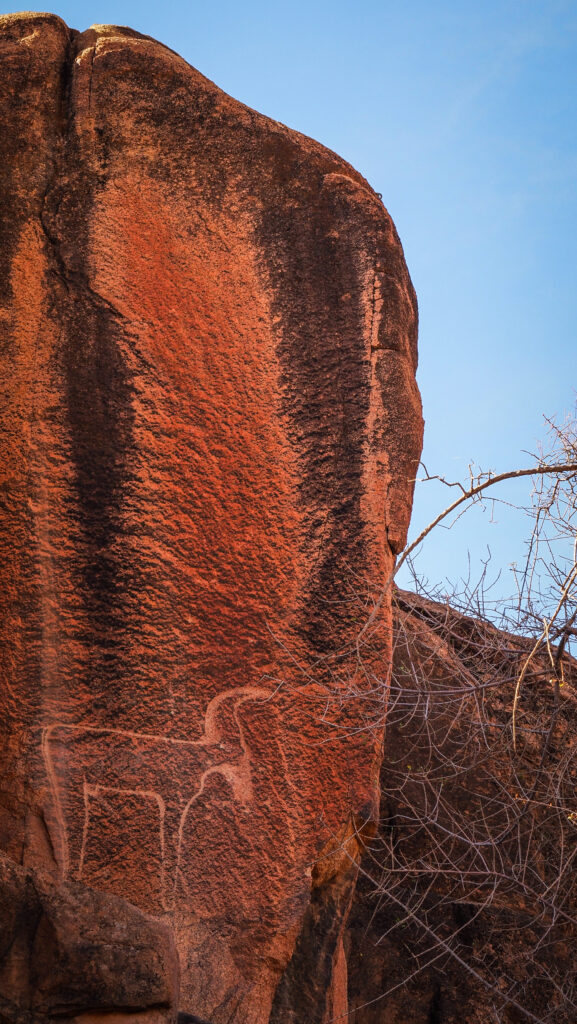
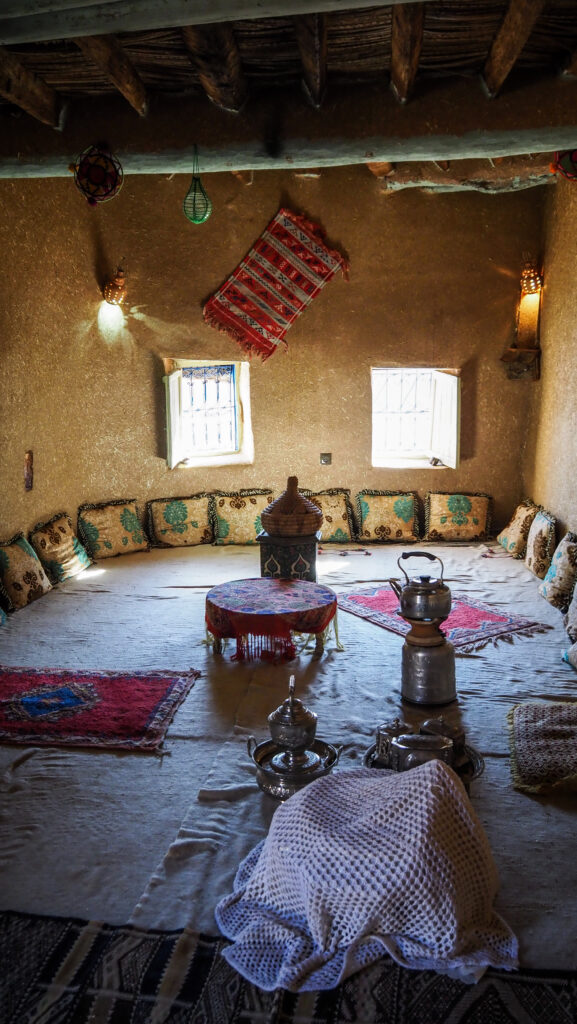
Follow the path further south with the R104 road in the distance on your right. Soon, on the left, you will notice a well-designed path climbing higher up the mountain. At some point, it vanishes but if you do some easy scrambling on the boulders, you will reach a breathtaking viewpoint of the valley.
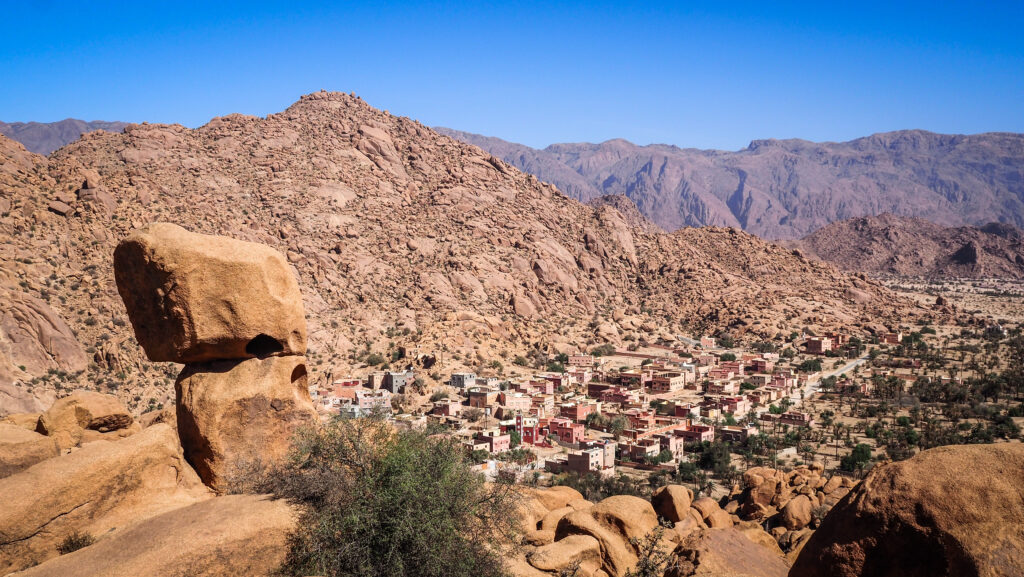

Mosque Aday
A beautiful mosque that contrasts well with the rocky landscape and is surrounded by old traditional houses.
La Maison Touareg
A popular shop which is full of colours and beautiful items, e.g. rugs, jewellery etc. The owner can get you anything that you need and is a wonderful person who doesn’t push you to buy anything.
Finger Mountains / Napoleon’s Hat
The iconic rock formation is named after its resemblance to the famous Napoleon’s hat. Let’s just say the resemblance is a bit far-fetched.
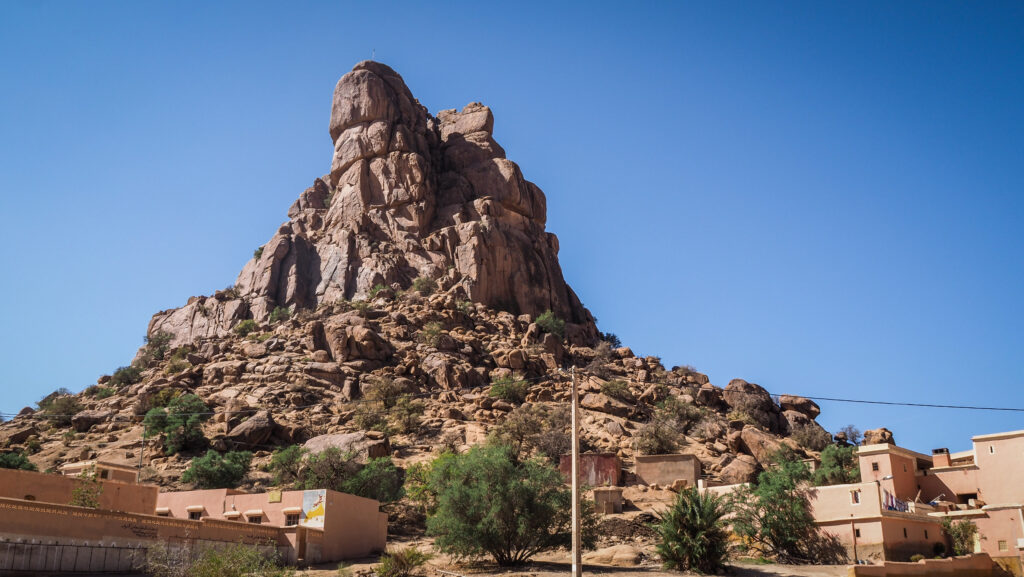
Painted Rocks
Belgian artist Jean Verame created the painted rocks in Tafraoute. The installation lasted three months and required an amazing 18 tonnes of paint.
They are generally known as blue rocks, however they are actually multicoloured. Pink, red, black, yellow, and orange are also present among the blues. Naturally, because the rocks were so exposed, the paint weathered significantly over time. However, they have now been repainted to restore their original vibrancy.
The access road is mostly gravel but suitable for 2WD cars.


Ait Mansour Gorges
The Ait Mansour Gorges is a stunning natural feature located near Tafraoute in southern Morocco’s Anti-Atlas mountains. Known for their dramatic rock formations and lush palm groves, the gorges offer a striking contrast between the barren, arid mountains and the greenery of the oasis within them.
Ait Mansour is relatively remote, making it a peaceful and less touristy destination compared to other Moroccan attractions. It is located about 30 km southeast of Tafraoute.
I followed the road R107 and just before the Painted Rocks, I took a left turn towards Ait Mansour. The road was very winding but there was minimal traffic so the driving experience was relaxing. With every kilometre, the views were becoming even more spectacular. The gorges are characterized by towering red and pink granite cliffs that rise dramatically on either side of a winding valley. The landscape is a mix of rocky terrain and lush vegetation, with palm trees, olive groves, and small agricultural plots fed by natural springs.
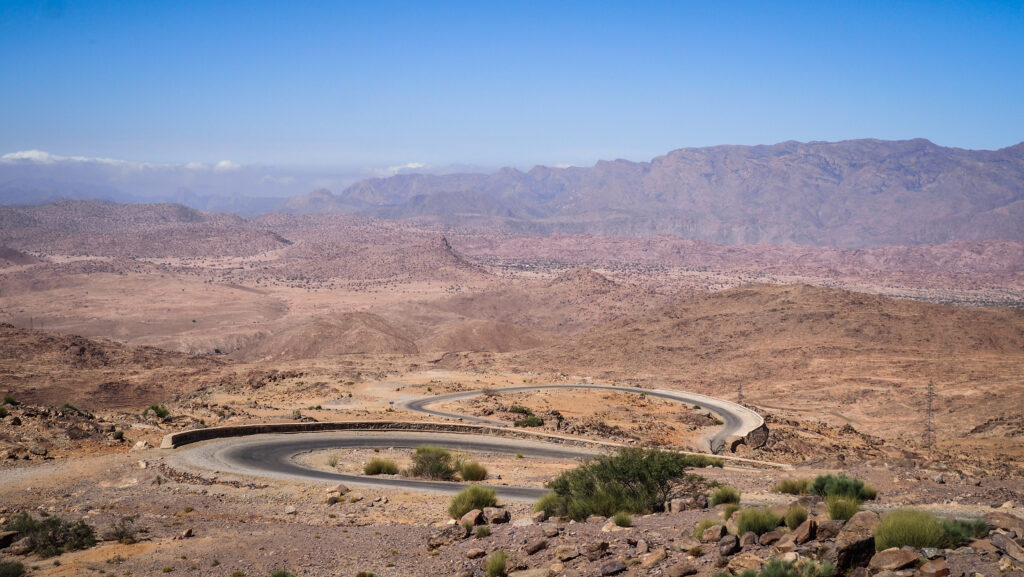
I made a quick stop in Ait Mansour to drink a coffee and have a walk among palms. The oasis is watered by a river that runs through the gorges, providing a life-giving resource to the otherwise dry landscape.
The area around the Ait Mansour Gorges is home to traditional Amazigh (Berber) communities. Small villages are scattered throughout the gorge, where locals live in mud-brick houses and practice subsistence farming.

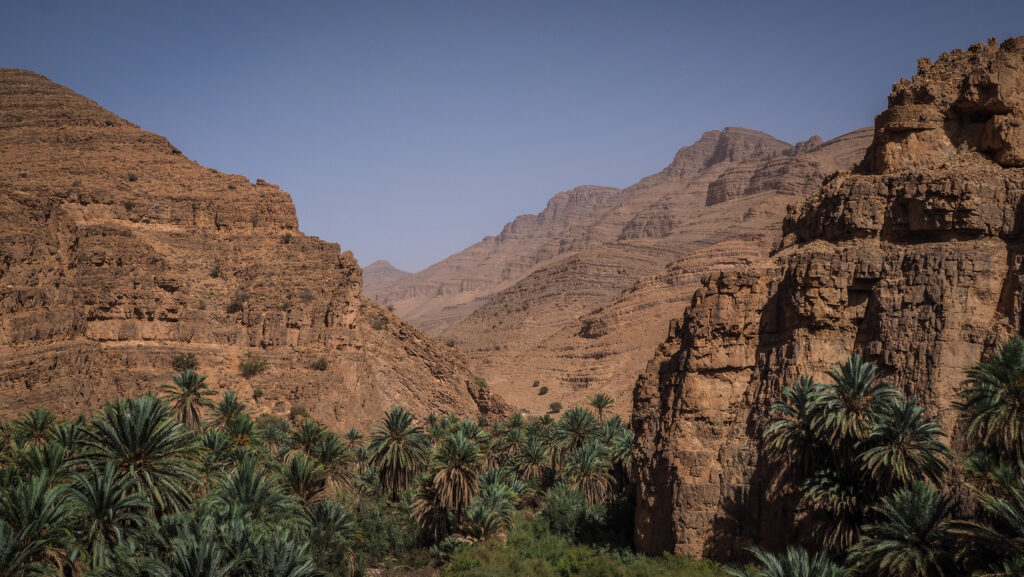
From Ait Mansour I continued the drive towards Gdour and then I turned right to continue the loop through Ait Bou Nouh and Ait Ou Said and in the end connecting again with the road R107. It was easily one of the best drives that I have done in Morocco!
The entire loop is about 100 km long and the drive takes 3 hours. Don’t rush it though! You will want to make plenty of stops!
